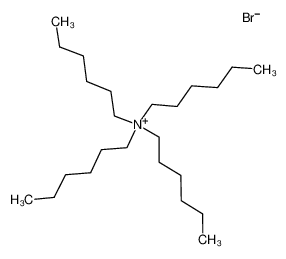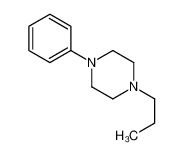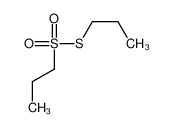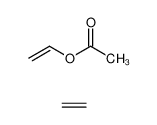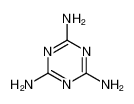| Product name | 1-bromopropane |
|---|
| Product number | - |
|---|---|
| Other names | 1-Bromopropane |
| Identified uses | For industry use only. Solvents (for cleaning or degreasing) |
|---|---|
| Uses advised against | no data available |
| Company | MOLBASE (Shanghai) Biotechnology Co., Ltd. |
|---|---|
| Address | Floor 4 & 5, Building 12, No. 1001 North Qinzhou Road, Xuhui District, Shanghai, China |
| Telephone | +86(21)64956998 |
| Fax | +86(21)54365166 |
| Emergency phone number | +86-400-6021-666 |
|---|---|
| Service hours | Monday to Friday, 9am-5pm (Standard time zone: UTC/GMT +8 hours). |
Flammable liquids, Category 2
Skin irritation, Category 2
Eye irritation, Category 2
Specific target organ toxicity – single exposure, Category 3
Specific target organ toxicity – single exposure, Category 3
Specific target organ toxicity – repeated exposure, Category 2
Reproductive toxicity, Category 1B
2.2 GHS label elements, including precautionary statements| Pictogram(s) | 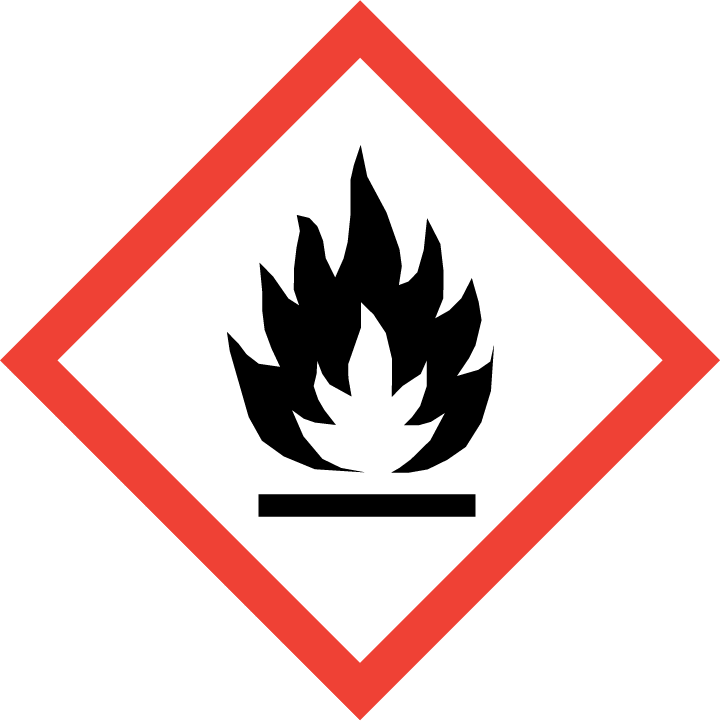 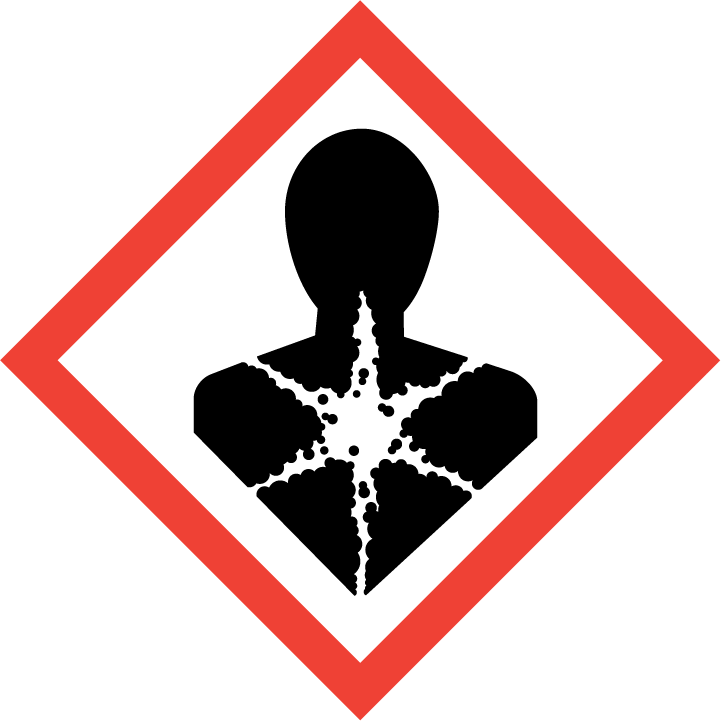 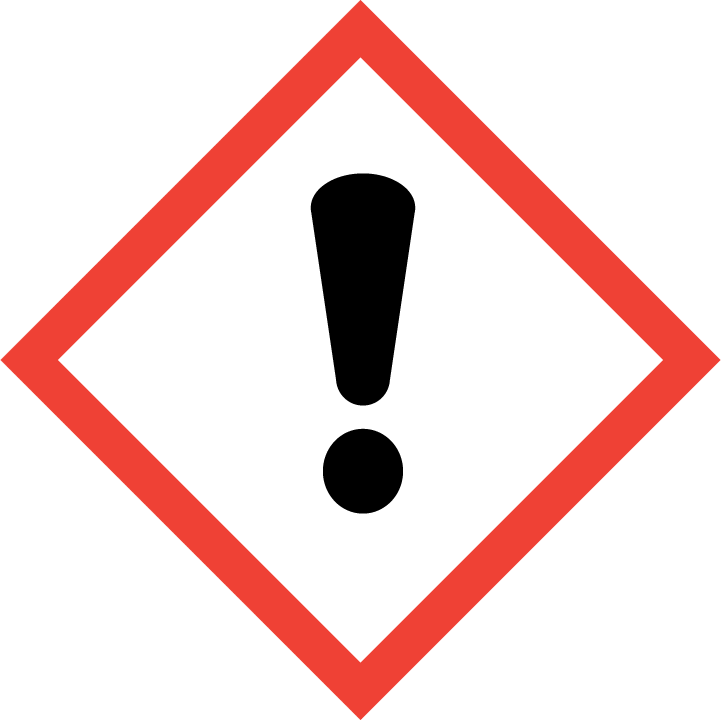 |
|---|---|
| Signal word | Danger |
| Hazard statement(s) | H225 Highly flammable liquid and vapour H315 Causes skin irritation H319 Causes serious eye irritation H335 May cause respiratory irritation H336 May cause drowsiness or dizziness H360FD |
| Precautionary statement(s) | |
| Prevention | P210 Keep away from heat, hot surfaces, sparks, open flames and other ignition sources. No smoking. P233 Keep container tightly closed. P240 Ground and bond container and receiving equipment. P241 Use explosion-proof [electrical/ventilating/lighting/...] equipment. P242 Use non-sparking tools. P243 Take action to prevent static discharges. P280 Wear protective gloves/protective clothing/eye protection/face protection. P264 Wash ... thoroughly after handling. P261 Avoid breathing dust/fume/gas/mist/vapours/spray. P271 Use only outdoors or in a well-ventilated area. P260 Do not breathe dust/fume/gas/mist/vapours/spray. P201 Obtain special instructions before use. P202 Do not handle until all safety precautions have been read and understood. |
| Response | P303+P361+P353 IF ON SKIN (or hair): Take off immediately all contaminated clothing. Rinse skin with water [or shower]. P370+P378 In case of fire: Use ... to extinguish. P302+P352 IF ON SKIN: Wash with plenty of water/... P321 Specific treatment (see ... on this label). P332+P313 If skin irritation occurs: Get medical advice/attention. P362+P364 Take off contaminated clothing and wash it before reuse. P305+P351+P338 IF IN EYES: Rinse cautiously with water for several minutes. Remove contact lenses, if present and easy to do. Continue rinsing. P337+P313 If eye irritation persists: Get medical advice/attention. P304+P340 IF INHALED: Remove person to fresh air and keep comfortable for breathing. P312 Call a POISON CENTER/doctor/…if you feel unwell. P314 Get medical advice/attention if you feel unwell. P308+P313 IF exposed or concerned: Get medical advice/ attention. |
| Storage | P403+P235 Store in a well-ventilated place. Keep cool. P403+P233 Store in a well-ventilated place. Keep container tightly closed. P405 Store locked up. |
| Disposal | P501 Dispose of contents/container to ... |
none
3.Composition/information on ingredients 3.1 Substances| Chemical name | Common names and synonyms | CAS number | EC number | Concentration |
|---|---|---|---|---|
| 1-bromopropane | 1-bromopropane | 106-94-5 | none | 100% |
Consult a physician. Show this safety data sheet to the doctor in attendance.
If inhaledFresh air, rest. Refer for medical attention.
In case of skin contactRemove contaminated clothes. Rinse skin with plenty of water or shower.
In case of eye contactFirst rinse with plenty of water for several minutes (remove contact lenses if easily possible), then refer for medical attention.
If swallowedRinse mouth.
4.2 Most important symptoms/effects, acute and delayedIrritating to the eyes, nose, throat, upper respiratory tract, and skin. (USCG, 1999)
4.3 Indication of immediate medical attention and special treatment needed, if necessaryGood curative action is shown by such cysteine derivatives as acetyl-cysteine in poisoning with haloid-alkyls. Dithiol antidotes and other drugs proved ineffective. /SRP: 1-Bromopropane is metabolized by glutathione S-transferases (at least in rodents). Therefore, N-acetyl-cysteine would be a good antidote to serve as a precursor in glutathione synthesis and the NAC should be a good antidote./
5.Fire-fighting measures 5.1 Extinguishing media Suitable extinguishing mediaIf material on fire or involved in fire: Do not extinguish fire unless flow can be stopped. Use water in flooding quantities as fog. Solid streams of water may be ineffective. Cool all affected containers with flooding quantities of water. Use "alcohol" foam, dry chemical, or carbon dioxide. Keep run-off water out of sewers and water sources. /Bromopropanes/
5.2 Specific hazards arising from the chemicalSpecial Hazards of Combustion Products: Toxic fumes of Hydrogen Bromide Behavior in Fire: 490°C (USCG, 1999)
5.3 Special protective actions for fire-fightersWear self-contained breathing apparatus for firefighting if necessary.
6.Accidental release measures 6.1 Personal precautions, protective equipment and emergency proceduresUse personal protective equipment. Avoid dust formation. Avoid breathing vapours, mist or gas. Ensure adequate ventilation. Evacuate personnel to safe areas. Avoid breathing dust. For personal protection see section 8.
6.2 Environmental precautionsPersonal protection: filter respirator for organic gases and vapours adapted to the airborne concentration of the substance. Remove all ignition sources. Collect leaking and spilled liquid in sealable containers as far as possible. Absorb remaining liquid in sand or inert absorbent. Then store and dispose of according to local regulations. Do NOT wash away into sewer.
6.3 Methods and materials for containment and cleaning upPersonal protection: filter respirator for organic gases and vapors adapted to the airborne concentration of the substance. Remove all ignition sources. Collect leaking and spilled liquid in sealable containers as far as possible. Absorb remaining liquid in sand or inert absorbent. Then store and dispose of according to local regulations. Do NOT wash away into sewer.
7.Handling and storage 7.1 Precautions for safe handlingAvoid contact with skin and eyes. Avoid formation of dust and aerosols. Avoid exposure - obtain special instructions before use.Provide appropriate exhaust ventilation at places where dust is formed. For precautions see section 2.2.
7.2 Conditions for safe storage, including any incompatibilitiesFireproof. Separated from strong oxidants and strong bases.Fireproof. Separated from strong oxidants, strong bases.
8.Exposure controls/personal protection 8.1 Control parameters Occupational Exposure limit valuesno data available
Biological limit valuesno data available
8.2 Appropriate engineering controlsHandle in accordance with good industrial hygiene and safety practice. Wash hands before breaks and at the end of workday.
8.3 Individual protection measures, such as personal protective equipment (PPE) Eye/face protectionSafety glasses with side-shields conforming to EN166. Use equipment for eye protection tested and approved under appropriate government standards such as NIOSH (US) or EN 166(EU).
Skin protectionWear impervious clothing. The type of protective equipment must be selected according to the concentration and amount of the dangerous substance at the specific workplace. Handle with gloves. Gloves must be inspected prior to use. Use proper glove removal technique(without touching glove's outer surface) to avoid skin contact with this product. Dispose of contaminated gloves after use in accordance with applicable laws and good laboratory practices. Wash and dry hands. The selected protective gloves have to satisfy the specifications of EU Directive 89/686/EEC and the standard EN 374 derived from it.
Respiratory protectionWear dust mask when handling large quantities.
Thermal hazardsno data available
9.Physical and chemical properties| Physical state | Colorless transparent liquid |
|---|---|
| Colour | Colorless liquid |
| Odour | Sweet odor |
| Melting point/ freezing point | -110°C(lit.) |
| Boiling point or initial boiling point and boiling range | 71°C |
| Flammability | Highly flammable. Gives off irritating or toxic fumes (or gases) in a fire. |
| Lower and upper explosion limit / flammability limit | no data available |
| Flash point | 25°C |
| Auto-ignition temperature | 914 deg F (490°C) |
| Decomposition temperature | no data available |
| pH | no data available |
| Kinematic viscosity | 0.489 mPa-s |
| Solubility | In water:2.5 g/L (20 ºC) |
| Partition coefficient n-octanol/water (log value) | log Kow = 2.10 |
| Vapour pressure | 146 mm Hg ( 20 °C) |
| Density and/or relative density | 1.353 |
| Relative vapour density | 4.3 (vs air) |
| Particle characteristics | no data available |
no data available
10.2 Chemical stabilityStable under recommended storage conditions.
10.3 Possibility of hazardous reactionsHighly flammable. Gives off irritating or toxic fumes (or gases) in a fire.The vapour is heavier than air and may travel along the ground; distant ignition possible.Halogenated aliphatic compounds, such as 2-BROMOPROPANE, are moderately or very reactive. Halogenated organics generally become less reactive as more of their hydrogen atoms are replaced with halogen atoms. Low molecular weight haloalkanes are highly flammable and can react with some metals to form dangerous products. Materials in this group are incompatible with strong oxidizing and reducing agents. Also, they are incompatible with many amines, nitrides, azo/diazo compounds, alkali metals, and epoxides. Emits toxic fumes of bromine when burned.
10.4 Conditions to avoidno data available
10.5 Incompatible materialsno data available
10.6 Hazardous decomposition productsWhen heated to decomposition it emits toxic fumes of /hydrogen bromide/.
11.Toxicological information Acute toxicity- Oral: LD50 Rat oral >2000 mg/kg
- Inhalation: LC50 Rat inhalation 253 g/cu m/ 30 minutes
- Dermal: no data available
no data available
Serious eye damage/irritationno data available
Respiratory or skin sensitizationno data available
Germ cell mutagenicityno data available
Carcinogenicityno data available
Reproductive toxicityno data available
STOT-single exposureno data available
STOT-repeated exposureno data available
Aspiration hazardno data available
12.Ecological information 12.1 Toxicity- Toxicity to fish: LC50; Species: Pimephales promelas (Fathead minnow); Conditions: flow through; Concentration: 67.3 mg/L for 96 hr
- Toxicity to daphnia and other aquatic invertebrates: no data available
- Toxicity to algae: no data available
- Toxicity to microorganisms: no data available
AEROBIC: 1-Bromopropane, present at 100 mg/L, reached 70% of its theoretical BOD in 4 weeks using an activated sludge inoculum at 30 mg/L in the Japanese MITI test(5).
12.3 Bioaccumulative potentialAn estimated BCF of 11 was calculated in fish for 1-bromopropane(SRC), using a measured log Kow of 2.10(1) and a regression-derived equation(2). According to a classification scheme(3), this BCF suggests the potential for bioconcentration in aquatic organisms is low(SRC). 1-Bromopropane was classified as having low bioconcentration based on fish accumulation studies (specific data not reported)(4).
12.4 Mobility in soilUsing a structure estimation method based on molecular connectivity indices(1), the Koc of 1-bromopropane can be estimated to be 40(SRC). According to a classification scheme(2), this estimated Koc value suggests that 1-bromopropane is expected to have very high mobility in soil.
12.5 Other adverse effectsno data available
13.Disposal considerations 13.1 Disposal methods ProductThe material can be disposed of by removal to a licensed chemical destruction plant or by controlled incineration with flue gas scrubbing. Do not contaminate water, foodstuffs, feed or seed by storage or disposal. Do not discharge to sewer systems.
Contaminated packagingContainers can be triply rinsed (or equivalent) and offered for recycling or reconditioning. Alternatively, the packaging can be punctured to make it unusable for other purposes and then be disposed of in a sanitary landfill. Controlled incineration with flue gas scrubbing is possible for combustible packaging materials.
14.Transport information 14.1 UN Number| ADR/RID: UN2344 | IMDG: UN2344 | IATA: UN2344 |
| ADR/RID: BROMOPROPANES |
| IMDG: BROMOPROPANES |
| IATA: BROMOPROPANES |
| ADR/RID: 3 | IMDG: 3 | IATA: 3 |
| ADR/RID: III | IMDG: III | IATA: III |
| ADR/RID: no | IMDG: no | IATA: no |
no data available
14.7 Transport in bulk according to Annex II of MARPOL 73/78 and the IBC Codeno data available
15.Regulatory information 15.1 Safety, health and environmental regulations specific for the product in question| Chemical name | Common names and synonyms | CAS number | EC number |
|---|---|---|---|
| 1-bromopropane | 1-bromopropane | 106-94-5 | none |
| European Inventory of Existing Commercial Chemical Substances (EINECS) | Listed. | ||
| EC Inventory | Listed. | ||
| United States Toxic Substances Control Act (TSCA) Inventory | Listed. | ||
| China Catalog of Hazardous chemicals 2015 | Listed. | ||
| New Zealand Inventory of Chemicals (NZIoC) | Listed. | ||
| Philippines Inventory of Chemicals and Chemical Substances (PICCS) | Listed. | ||
| Vietnam National Chemical Inventory | Listed. | ||
| Chinese Chemical Inventory of Existing Chemical Substances (China IECSC) | Listed. | ||
| Creation Date | Aug 10, 2017 |
|---|---|
| Revision Date | Aug 10, 2017 |
- CAS: Chemical Abstracts Service
- ADR: European Agreement concerning the International Carriage of Dangerous Goods by Road
- RID: Regulation concerning the International Carriage of Dangerous Goods by Rail
- IMDG: International Maritime Dangerous Goods
- IATA: International Air Transportation Association
- TWA: Time Weighted Average
- STEL: Short term exposure limit
- LC50: Lethal Concentration 50%
- LD50: Lethal Dose 50%
- EC50: Effective Concentration 50%
- IPCS - The International Chemical Safety Cards (ICSC), website: http://www.ilo.org/dyn/icsc/showcard.home
- HSDB - Hazardous Substances Data Bank, website: https://toxnet.nlm.nih.gov/newtoxnet/hsdb.htm
- IARC - International Agency for Research on Cancer, website: http://www.iarc.fr/
- eChemPortal - The Global Portal to Information on Chemical Substances by OECD, website: http://www.echemportal.org/echemportal/index?pageID=0&request_locale=en
- CAMEO Chemicals, website: http://cameochemicals.noaa.gov/search/simple
- ChemIDplus, website: http://chem.sis.nlm.nih.gov/chemidplus/chemidlite.jsp
- ERG - Emergency Response Guidebook by U.S. Department of Transportation, website: http://www.phmsa.dot.gov/hazmat/library/erg
- Germany GESTIS-database on hazard substance, website: http://www.dguv.de/ifa/gestis/gestis-stoffdatenbank/index-2.jsp
- ECHA - European Chemicals Agency, website: https://echa.europa.eu/










